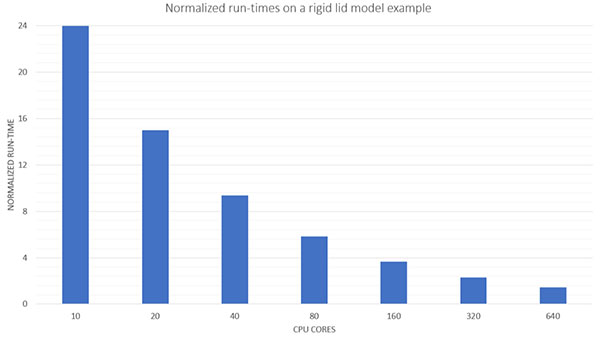Editor’s Pick: CFD solver on unified code base
Flow Science’s FLOW-3D 2022R2 Product Family has a unified solver that allows access to the features of OpenMP/MPI hybrid parallelization, whether running on an HPC cluster or an engineering workstation.

Users turn to FLOW-3D products for tasks such as modeling a large dam near flood stage. With the new update, FLOW-3D users have access to the same features on both a single workstation and an HPC cluster. Image courtesy of Flow Science.
Latest News
October 4, 2022
Flow Science has updated its CFD solver FLOW-3D, offering the same features on its workstation version and its HPC version for the first time.
The company says users who in the past had to choose between the features available on the single-computer version and the HPC version can now expect all the same features on both systems. The new unified solver allows users access to the same features of OpenMP/MPI hybrid parallelization, whether running on an HPC cluster or a single engineering workstation. Until this change, only the HPC clusters could run such parallelized tasks.
Other new features in this update have been added. The company says time-step stability has improved. There is a new time-step stability limit, available in the numerics widget. For models that are actively running and convection limited, Flow Science says the new option offers typical speed-up of about 30%.

This update to FLOW-3D adds an automatic pre-conditioner that kicks in when a model iterates too heavily. The company says this will improve analysis involving pressure convergence.
There is a new solver option for viscoelastic fluids, which the company says is effective for high Weissenberg numbers when comparing elastic forces to viscous forces.
Flow Science says there are also improvements to advanced cooling channel and phantom component controls, as well as improved entrained air functionalities.
For more information about the FLOW-3D 2022R2 product family click here or register for their product release webinar on Thursday, October 6 at 1 p.m. ET.
Sources: Press materials received from the company and additional information gleaned from the company’s website.
More Flow Science Coverage
Subscribe to our FREE magazine, FREE email newsletters or both!
Latest News
About the Author
DE’s editors contribute news and new product announcements to Digital Engineering.
Press releases may be sent to them via [email protected].






